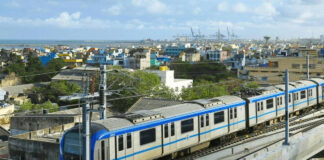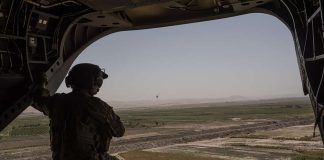JANUARY 17, 2021
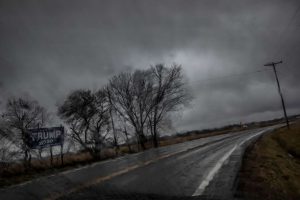
It was such an obvious place to begin. This is the intersection where Floyd was murdered by city police. The racial reckoning of 2020 began at that exact spot, and just spread across the entire country, and the world. It’s ground zero, I’ve now been there so many times as as photographer and a city resident, and on this morning you could see the cement barricades people have built to keep the protest memorial to Floyd protected from traffic. Volunteers guard the memorial and care for it 24 hours a day; when winter began people have built the volunteers little warming shacks, like ice fishing houses, and I knew George Floyd Square caretakers tend to gather at the gas station across the street, keeping company and talking things over.
The Minneapolis corner of 38th Street and Chicago Avenue, where George Floyd died last May as a city police officer kneeled on his neck, has turned into protest memorial tended to day and night by local volunteers. With a looming portrait of Floyd, and his repeated dying cry of “I can’t breathe” painted on the sidewalk, the intersection is now locally referred to as George Floyd Square.
So here they were, outside the gas station, just after dawn, Black people and white, varying ages. I told them about the trip I was making, that this felt like the significant place to begin, and that I wanted to use my drone to make an overhead photograph—didn’t want to worry them with its buzzing. They nodded, gave me the thumbs up, wished me luck. When I left, they were all still at the memorial, back at their caretaking, shoveling snow.
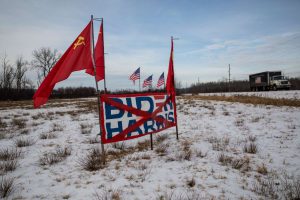
Unambiguous sentiment expressed in a farm field along Highway 73, between the towns of Gilman and Jump River.
And I drove east. Sometimes I stopped at places just because their names appealed to me: Zion, Illinois; Plum, Pennsylvania. Once I got out of the car on a narrow Wisconsin road, because inside a fenced field I’d just seen a big Biden/Harris sign altered with a giant red X over the two names, and red hammer and sickle flags adorning the signposts. An older couple saw my car by the roadside and stopped to ask if I was all right; I explained I was a photographer, and the man nodded toward the sign. “I’d be interested to know your position on that,” he said.
I considered a response that would be both prudent and polite. “Let’s say I’m… neutral,” I said.
“Well, good,” the man replied. “Better be that way, or you might find yourself in trouble out here.”
His voice was cordial. I kept driving—a Midwestern photographer’s January 2021 road trip, right? I lived abroad for 20 years before moving back to the U.S. in 2014, and have accumulated a collection of useful combat photographer items, some of which which seemed appropriate to throw into the Subaru in advance of this presidential inauguration. So I’m chugging along, snowy road, gray skies, change of clothes, toiletries, cameras, Kevlar flak jacket, helmet, gas mask, N95 mask, Covid face shield, Clorox spray, disposable gloves, hand sanitizer, cooler full of food to keep me from picking up restaurant coronavirus. Listening to the radio, because that’s what you do on a road trip, except this was Nancy Pelosi and the impeachment hearing. In Paulding, Ohio, I stopped at a car dealership that had set out gigantic red-white-and-blue inflatables, an Uncle Sam and an eagle. The owner came out, and when I explained myself he said, “Look, I don’t know if you’re a Democrat or a Republican. But I just hope we can move on, and that we can start to come together as a country.”
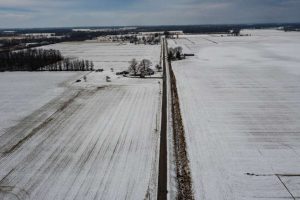
A drone takes in the clean geometry of empty county road G-24, near the northwest Ohio town of Dupont.
He just volunteered this; I hadn’t asked him anything, and he didn’t need to ask me why a National Geographic photographer was driving a thousand miles of American roads to reach the 2021 inaugural. Nobody did, really; people knew, they got it, and everybody I talked to seemed to share this sense of exhausted sorrow, of a massive trauma from which we might be recovering, of desperate hope that this was so. When I finally reached Washington Saturday afternoon, taking in the barricades and fencing and thick military presence, one of the people I photographed was a woman regarding the fences while walking a tiny leashed dog. Her dog looked silly, in its little overcoat; she could see that the sight of this tiny animal was amusing me for a moment, and we looked at each over our Covid masks. “The sad thing is,” she said, “we don’t know when, or if, it will ever be normal again.”
David Guttenfelder is an award-winning photojournalist whose work focuses on geopolitics, conservation, and culture. To see more of his work, follow him on Instagram.
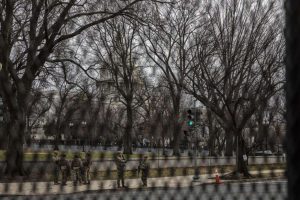
Its great dome blurred from view by fencing, the U.S. Capitol building—where rioters overpowered police to storm inside on Jan. 6—is now visibly patrolled, in the days before this week’s inauguration, by National Guard troops.
Courtesy/Source: National Geographic









































































































